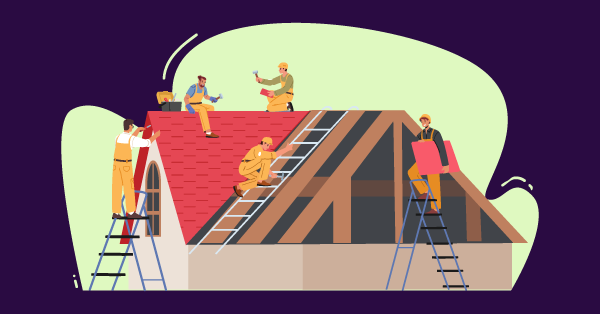What are the risks of buying a property with timber purlin?
A purlin is found within the roof of a property midway down underneath the rafters that lie vertically on top of the purlin. The purlin is usually made of timber but can also be steel in a steel-frame house. The type of wood used for purlins in residential homes varies between softwoods like spruce and yew and hardwoods like sycamore and birch.
The challenges when buying a property with timber purlins are:
- Damp. If the roof is damaged or poorly constructed, water can get into the loft space, causing damage to the wood. Inspect the roof from the outside to spot dislodged/missing titles, lead flashing not laying correctly or sagging roof.
- Rot. Water or damp in a loft can cause the wood to rot.
- Wood Worm. Wood worm can eat away at wood causing it to flake, dry and break.
- Damage. Workman can damage purlins or rafters by removing a chimney breast or other work in the loft.
Examples of timber purlins | |
|
|
The purlin runs horizontally underneath the rafters that sit on top of it and run vertically. The Purlin is supported by the strut at a 45-degree angle.
What type of survey inspects the condition of a purlin?
A RICS surveyor inspects the condition of the roof structure internally and externally in a Level 2 or Level 3 Home Survey (previously called a HomeBuyer Report and Building Survey). The server should inspect the whole roof construction from the inside and take damp meter readings.
Why are purlins so important in a property?
The roof is an essential part of the construction of the property as it protects the property from the weather; however, the roof structure is considerably heavy with the tiles, rafters, purlin and struts. Purlins are included to provide rigidity and support to the rafters to avoid bending, and struts are introduced to distribute some of the load to internal structural walls or joists.
If a purlin is damaged, rot or overloaded, it can break and cause the roof to swell/bow.
What type of wood is used for purlins in houses?
- C16 Treated timber. This is a very common material used in the construction of residential homes and can be soft or hardwood.
- Oak. Oak is one of the strongest types of wood and has a high resistance to decay. The material is dense, so can take more weight; however, it is one of the most expensive types of wood.
- Cedar. Cedar is one of the most popular choices for exposed purlin and rafters because it is rot-resistant and lightweight. While it looks great, it can be expensive and requires ongoing maintenance, such as painting or staining.
Tips for buying a property with timber purlins
- Go into the loft during the viewing - does it feel damp? can you see any damage to the wood? is there any ventilation?
- Check the roof from the outside and look for missing tiles, sagging (bowing inwards), or lead flashing lifted or missing.
- Ask the seller if they've undertaken any work to the roof and obtain warranties or guarantees for the work done.
- Instruct a surveyor to inspect the property before you exchange contracts.
- Obtain quotes to repair any defects found in the roof by the surveyor - Checkatrade is good for obtaining quotes.
What are the costs of repairing a purlin?
The cost to repair a purlin starts from £350 EXC VAT, excluding the replacement timber purlin. The cost will increase the larger the property and if the purlin is made of more expensive wood such as oak.
Andrew started his career in 2000 working within conveyancing solicitor firms and grew hands-on knowledge of a wide variety of conveyancing challenges and solutions. After helping in excess of 50,000 clients in his career, he uses all this experience within his article writing for SAM, mainstream media and his self published book How to Buy a House Without Killing Anyone.
Caragh is an excellent writer and copy editor of books, news articles and editorials. She has written extensively for SAM for a variety of conveyancing, survey, property law and mortgage-related articles.
















